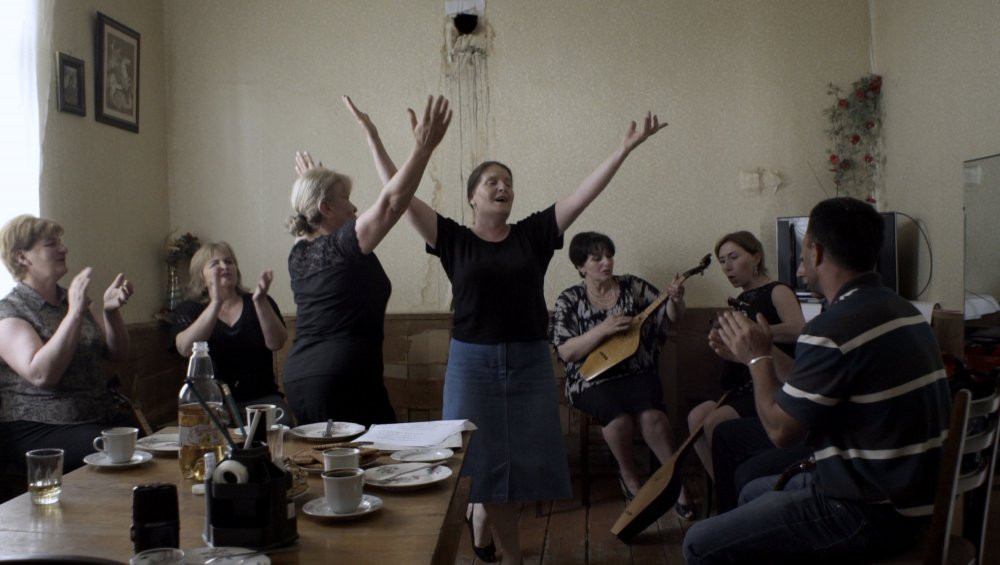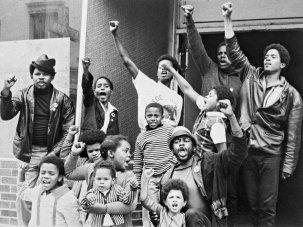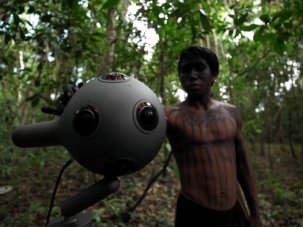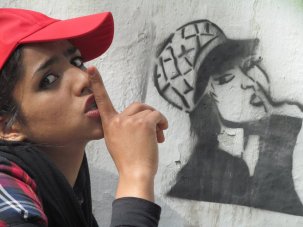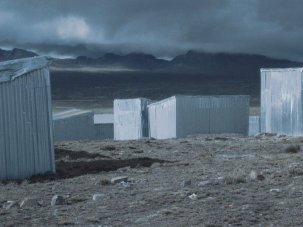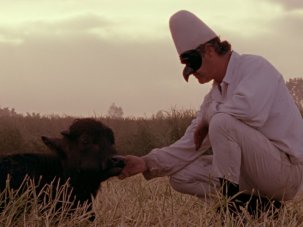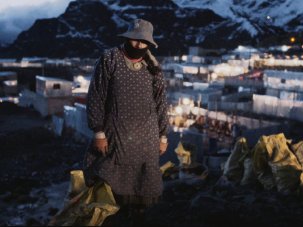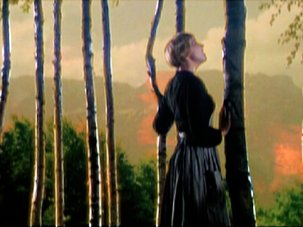Back in 2008, Sheffield Doc/Fest ran a panel discussion titled Theatrical Docs RIP. Intended more as provocation than proclamation, it seems a strangely outdated notion now, and that has been emphasised in the UK in no small part by Doc/Fest’s continued success. Welcoming over 30,000 visitors to over 200 films, talks, and virtual reality experiences across the Steel City, it is undeniably the UK’s premiere documentary occasion.
The 23rd Sheffield Doc/Fest ran 7-12 June 2017.
This very position, however, has created its own problems – most notably, for this cinephile, the challenge of continuing to carve space to champion genuinely creative nonfiction cinema when at the forefront of an industry currently experiencing its most sustained period of broad appeal. Popular international festivals like CPH:DOX, True/False and Visions du Réel show that the appetite exists elsewhere in the world. Our very own London is lucky enough to boast Open City Documentary Festival and, more recently, Frames of Representation and the oft overlooked Essay Film Festival, which cater to those in search of more unusually flavoured arrangements.
Although Doc/Fest has hardly avoided screening creative works, their comparative absence has been evident. It’s understandable given the scale and scope of a large festival with conflicting priorities, but the appointment of Luke Moody (joining from BRITDOC) as Director of Film Programming for the 2017 edition certainly suggested a move to address any imbalance. “I can only assume they were aware of my personal tastes,” he says with a wry smile, during a brief pause between screening duties.
Moody was one of the co-founders of Frames of Representation, which enjoyed a stellar first edition in 2016, and there was an understandable assumption he’d bring similar sensibilities with him to Sheffield. “It’s about creating the right spaces for these films to play together,” he explains of the new 2017 programme’s new strand structure. With sections like Doc/Expose, Doc/Think and Doc/Rhythm, the idea is to guide audiences to the films of most interest to them. Those keen to see more creative films could immerse themselves in the dedicated Doc/Visions strand, although another sly smile suggested that the Doc/Adventure strand may also pay dividends in my own search for the festival’s more experimental and interesting entries.
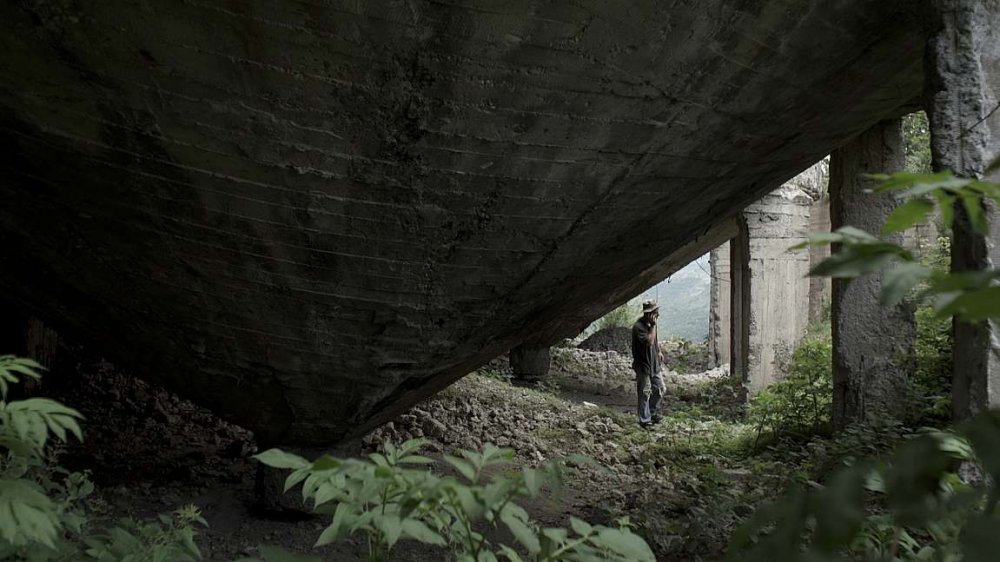
City of the Sun (2017)
Another good indicator was the newly minted Art Doc Award, intended to recognise ‘new forms of documentary storytelling’. The first recipient of the prize transpired to be Rati Oneli’s City of the Sun, a strikingly shot portrait of a semi-abandoned mining town in Georgia and those who remain behind. The title comes from Tommaso Campanella’s 17th century utopian philosophical text and the various residents of the town could well have been pulled from the streets of that hard-working theocratic society, where toil is virtue. There’s something more mythic at play in Oneli’s film, however, clearly signposted by quotations from Shota Rustaveli’s The Knight in the Panther’s Skin, a medieval Georgian epic poem that has been considered a book of the nation for centuries.
Oneli seems to be crafting his own regional mythology, inflecting otherwise gentle observation with fictional elements, surreal moments and images, and dramatic shots of the brooding landscape. In certain ways it resembles Salomé Lamas’s Eldorado XXI, about a mining town in the Peruvian Andes, but it also frequently reminded me of the factory theatricality of Petr Zelenka’s Dostoyevsky adaptation The Karamazov Brothers. Industry drove the town’s foundation and the mechanical is infused in the Oneli’s own creation myth. Impressive gliding shots that might otherwise feel supernatural intentionally advertise their construction, via a creaking cable car or a rumbling mine cart. Work and art, the base and the divine, are entwined in a way that reflects the realities of the town’s unshaken residents: the music teacher hawks scrap metal to feed his family; the miner spends the night in the theatre so he can perform between shifts.
City of the Sun (trailer)
Mythology also recurred in two vastly different films that I happened to see in relatively quick succession and which both referenced the same famous Greek hero.
The first of these was Ulysses in the Subway, whose title is a twist on book XI of Homer’s Odyssey which involves a voyage into the underworld. Aside from their subterranean setting, the parallels to the epic poem are not immediately evident in this highly experimental 3D film. Avant-garde duo Flo and Ken Jacobs have teamed with digital artists Paul Kaiser and Marc Downie to transform an audio recording of Ken’s journey through the New York subway into a mesmerising dance of flickering, luminescent static. The visuals – created with an audio-interpreting algorithm – are spectacular and only interrupted fleetingly when our traveller seems to meet the ghost of Thomas Edison as footage from his 1905 film of the same route briefly invades the screen. Largely, our senses are primed to listen to the repetitive sounds of the daily commute, which our brains usually ignore. Ken’s journey ends with his return from his wanderings and a reunion with Flo.
Ulysses in the Subway (trailer)
In Esther Wellejus’ beautiful and deeply moving short You Are Still Somebody’s Someone, the evocation of Odysseus is a more mournful. On this occasion he is the absent father, disappeared to foreign lands without reasonable explanation. Wellejus’ film is an elemental expression of memory and childhood trauma accompanied by a letter to her father, read in voiceover, which one imagines he’ll never hear. Through home movies and archival footage, the film transports the audience to the tactile surroundings of the director’s home in Lolland, Denmark as shifting seasons and creeping storms seem to ebb and flow with the tides of her personal torment.
You Are Still Somebody’s Someone (trailer)
Natural rhythms and the deliberate observation of slow cinema have come to the fore in various illustrations of creative documentary in recent years and the aforementioned City of the Sun was not the only example vying for attention at Doc/Fest this year. New films by Singaporean artist Pin Pin Tan and Thai director Sompot Chidgasornpongse patiently investigate relationships between past and present – and between individual and populace – in moments of rest.
In Tan’s In Time to Come the compilation and unearthing of time capsules gives a vague narrative thread to a film otherwise composed almost exclusively of waiting. These are the forgotten moments that would never usually be collected, but through their quiet accumulation in this hour-long audiovisual time capsule, an image forms of a sombre society and the cultural rituals that seem to preclude true intimacy and connection within it.
In Time to Come (trailer)
Chidgasornpongse’s Railway Sleepers has a clearer through line: a journey into Thailand’s industrial and colonial history on board its trains. Before the screening, the director asked the audience to take themselves away from the large Sheffield auditorium and instead imagine they were on the train, people-watching. Despite the clear course mapped out by their chosen mode of transport, what was subsequently portrayed through quotidian exchanges is a society rife with inequality and unsure about its direction. An off-the-rails ending, evocative of his friend and countryman Apichatpong Weerasethakul, sees the director commune with a colonial ghost, and suggests a distinct lack of forward momentum since the triumphant opening of Thailand’s first railway back in 1893.
Railway Sleepers (trailer)
There are similar themes evident in Bart Simpson’s Brasilia: Life After Design, a film attempting to grapple with the implicit isolation of a city actively separated into different sectors during its planning and inception. It contains striking moments, but rather than formally doubling-down on its exploration of how regimented life can become in proscribed urban spaces, and how a great social and architectural experiment has failed to coalesce, it retreats into the safer territory of personal narratives.
Brasilia: Life After Design (trailler)
This decision lies in stark contrast to Theo Anthony’s excellent debut feature Rat Film, which examines structural inequality in the city of Baltimore through the lens of its rodent problem. However, as a pest control expert surmises early in the film, “It ain’t never been a rat problem; it’s a people problem.” Another film about social engineering and urban development, on this occasion it’s far more insidious than the grand ideals of Lúcio Costa and Oscar Niemeyer.
One of Rat Film’s many intersecting lines of thought is a virtual tour of a crude CGI rendering of Baltimore. It becomes apparent, as the image drifts around suburbia, that viewing a house from a certain angle can reveal a glitch that shows the starry void of the universe beneath the pixelated façade. This seems to have inspired Anthony to come at his thesis from as many angles as possible in the hope that one will break through to a universal truth, and while the result is often rough around the edges, it’s bold and compelling.
Often moving at breakneck speed, this layered essay film transposes rat populations onto city ordinance maps, juxtaposing vigilante pest controllers with social cleansing, archival photos from slums and crime statistics. As wide-ranging as the film is, it hinges on John B. Calhoun’s terrifying experiment on Norway rats in the early 1960s which led to the coining of the term ‘behavioural sink’ as a model for societal collapse due to overpopulation. There is an early moment in which it is explained that Baltimore’s trash cans are two inches taller than rats tend to be able to jump. The allegorical connotations of this social immobility bristle in every cut of Anthony’s impressive film.
Rat Film (trailer)
A film with a similarly powerful message was the bomb, directed by Kevin Ford, Smriti Keshari and Eric Schlosser, the author of Command and Control and Gods of Metal, which both centre on the nuclear threat. Their film is a bravura experimental mash-up of archival footage with a pulsating score by The Acid, showing the dangers of nuclear armament and the militaristic obsessions that drive it. It’s a sensory overload that was designed to be experienced from within, in a 360 degree auditorium with a overwhelming live score. Even in it’s lessened ‘flatter’ form, it’s still a riveting watch, and one that works as an aesthetic complement to Schlosser’s books on the subject, rather than just rehashing them.
the bomb (trailer)
One event that wasn’t flattened was that of Hannah Catherine Jones (a.k.a. Foxy Moron), who presented a trio of VJ performances from her ongoing series The Oweds. Combining theremin, instrumental and vocals, she gave live accompaniment to short video projections that recall Kevin B. Lee’s desktop documentary style, harnessing everything from YouTube clips of Beyoncé and Kendrick Lamar to Google image searches. The pieces engaged visually and aurally with issues around race, gender and mental health, all with inflections of Afrofuturism aided by the electronic echoes of Jones spine-tingling voice.
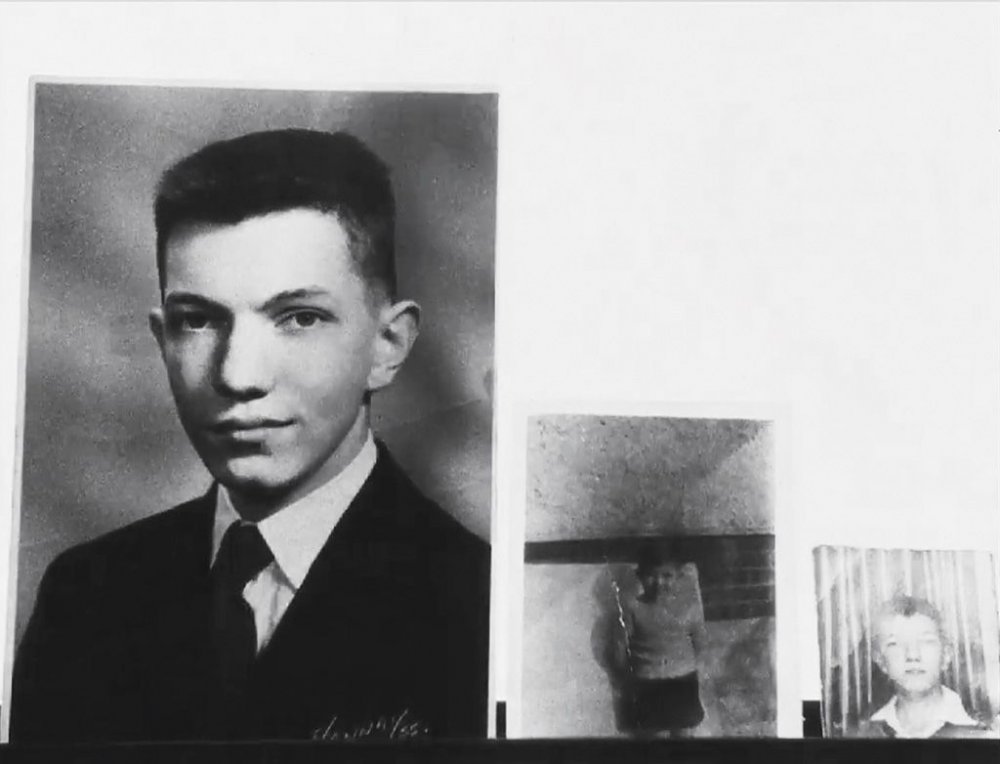
Electro-Pythagoras: A Portrait of Martin Bartlett (2017)
Another musician was the focus of my favourite film of the festival, Luke Fowler’s extraordinary medium-length feature Electro-Pythagoras: A Portrait of Martin Bartlett. Bartlett was an openly gay Canadian composer and academic who, in the 1970s and 80s, became a pioneer of electronic performance and, in particular, the use of the microcomputer.
There’s a particular pitfall that hampers lots of films about visionary artists – rejecting the experimental predilections of their subjects in favour of convention, and inevitably failing to imbue the work with the subject’s own spirit. Andres Veiel’s Beuys (about the German sculptor Josef Beuys) and Reiner Holzemer’s Dries (about the Belgian designer Dries Van Noten) both played at the festival, and while they’re lively tales about fascinating characters, they’re also deflated somewhat in the telling.
No such problem for Electro-Pythagoras. The film combines archival footage, interviews, original sound recordings and new footage shot by Fowler, editing them together to echo the styles and ideas of Bartlett’s own music, poetry and artwork. It’s not so much a re-telling of a life story as an attempt to express his artistry through film. In a letter shown at one point, Bartlett describes a piece of his work as “all aesthetic experience; all climax”. There couldn’t be a more fitting tribute to pay to Fowler’s exceptional film – by my reckoning, the holy grail in my search for expanded cinematic horizons at this year’s Doc/Fest.
-
The Digital Edition and Archive quick link
Log in here to your digital edition and archive subscription, take a look at the packages on offer and buy a subscription.




